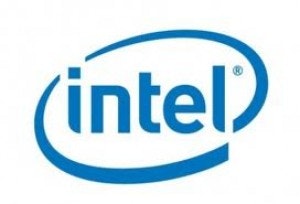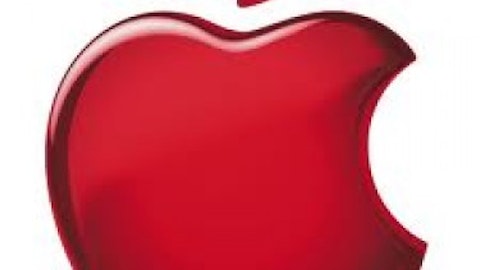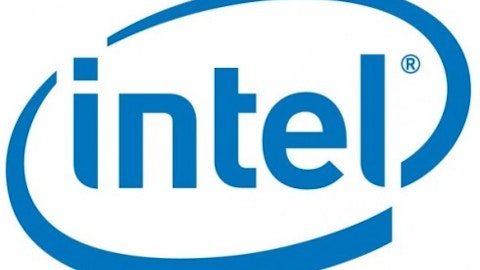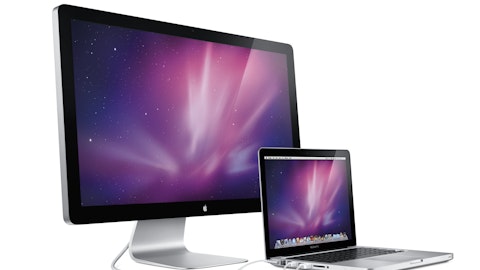Over the past decade, Intel Corporation (NASDAQ:INTC) – the largest processor manufacturer in the world – devolved from a top tech stock into a textbook example of a mature one. When excitement and momentum leave a tech company such as Intel, stagnation, stock buybacks and dividends usually follow.
Although a company can’t grow revenue and earnings at double digits forever, it has to stay flexible in the face of rapidly shifting tides of technology – it must adapt or die. The problem is that when publicly traded tech companies become large cap behemoths, they develop a myopic quarter-to-quarter view that distorts the danger of disruptive trends.
That’s exactly where Intel is today, and the leader of that disruptive trend is British chip company ARM Holdings plc (NASDAQ:ARMH) .
How did we get here?
Intel’s greatest failure over the past five years was completely missing the smartphone and tablet revolution, which started with Apple Inc. (NASDAQ:AAPL)’s seminal iPhone in 2007. Intel didn’t respond quickly enough to the market demand for lower-power chips which would prolong battery life on these devices.
Its initial response, the low-voltage Intel Atom, was targeted at netbooks, which Intel believed to be the natural successor to laptops. Unfortunately, Apple’s iPad in 2010 threw a curveball that added tablets into the equation. The Atom’s x86 architecture was always seen as a poor alternative to ARM processors, which still outperformed Intel’s chip in power consumption.
Investors should remember that ARM doesn’t manufacture chips – it only generates revenue from granting licenses to other companies. Companies pay ARM license fees to acquire intellectual property (IP) rights to develop its mobile chips – a factor that has contributed to ARM’s explosive growth over the past decade.
One bad decision in 2006
Intel’s current predicament stems from CEO Paul Otellini’s reluctance to accept ARM as a viable alternative processor to its aging x86 architecture – the same one that has evolved from Intel’s earliest chips in 1978.
Ironically, Intel once licensed ARM chips, which it sold as mobile and embedded XScale processors. Unfortunately, Otellini divested Intel’s ARM assets, which it sold to Marvell Technology for $600 million, one year prior to the release of the iPhone.
Otellini believed this would help Intel stay focused on creating quality x86 chips for its primary laptop, desktop and server markets.
What happened next was a revolution – ARM chips captured 90% of the smartphone processor market, as well as 10% of the mobile computing market – which includes laptops, netbooks and tablets.
The writing’s on the wall
Just as the major Wintel PC makers – Hewlett Packard and Dell – neglected the rise of Apple and Samsung until it was too late, Intel refused to believe that its grasp of the PC market, that it has so easily dominated in the 1990s, was slipping fast.
However, two recent developments have shaken Intel investors to the core.
First, Microsoft Corporation (NASDAQ:MSFT) is offering two versions of its Surface tablet – a Windows 8 version that runs on a higher-powered Intel processor, and a cheaper Windows RT version that uses an ARM processor. Microsoft has apparently declared their long-time ‘Wintel’ marriage an open one.
Second, Apple is rumored to be considering dropping Intel processors from its entire line of laptops and desktops in favor of ARM’s upcoming 64-bit chips. To many analysts, this was an inevitability, since ARM chips already power Apple’s iPhones and iPads.
If you can’t beat ‘em…
In my opinion, it’s not too late for Intel to save itself. With a new CEO on the way to replace Otellini in May, it’s high time for the company to entertain some new ideas.
First on the agenda should be a return to licensing ARM technology. This would provide Intel with immediate growth opportunities, and give it a viable alternative platform if it needs to phase out its x86 chips. In other words, it would get two baskets for its eggs.
Licensing ARM chips again could also rekindle its broken partnership with Apple. Apple is currently looking for a new partner to manufacture its ARM chips, which are ironically made by its arch nemesis Samsung. Taiwan-based foundry TSMC has emerged as the top contender, but Intel could also have a shot at becoming Apple’s new manufacturer – if it offers an ARM-based alternative, that is.
If Intel holds off on joining its rival any longer, other smaller ARM customers such as Nvidia, Broadcom, Marvell, Freescale and AMD, could evolve into dangerous competitors and chip away further at Intel’s once dominant market share.
A matter of pride
Intel hasn’t given up on its dreams to take down ARM with an effective version of the Atom. The company recently unveiled its newest low-power 32nm Atom processor, the ’Centerton S1200’ series, a 64-bit lower-powered CPU that is expected to compete with ARM’s 64-bit Cortex A9 chips.
Both chips are aimed at the enterprise market, where demand for power-efficient server processors is rising. Giant data centers, such as those operated by Amazon or Google, consume so much electricity that effective low-power devices are an absolute necessity for preserving a company’s bottom line.
That might be progress in the server market, but a mobile answer to ARM’s dominance remains frustratingly elusive.
The Foolish bottom line
ARM Holdings ($785 million in 2011 revenues) is a veritable David compared to Intel’s Goliath ($54 billion in 2011 revenues), but David just needed a well placed rock between the eyes to take Goliath down.
In this case, however, ARM has given slingshots and rocks to a dozen of its friends, who are all ready to take their best shot at taking out the giant. I think it’s time for Intel to play nice with the little guys.
Krisztian Flautner, the head of ARM’s R&D department, acknowledged that Intel would have a tough time staying ahead if it stays with Otellini’s business model. “They (Intel) emphasizethe core technology and try to push the lock-in business model,” Flautner stated. “We are the David of the situation, with Intel as Goliath. That is how disruption happens.”
The article The Reason ARM Holdings Is Dominating Intel originally appeared on Fool.com.
Copyright © 1995 – 2013 The Motley Fool, LLC. All rights reserved. The Motley Fool has a disclosure policy.






